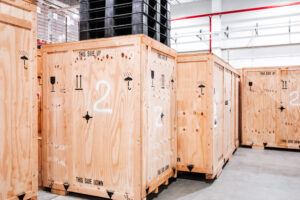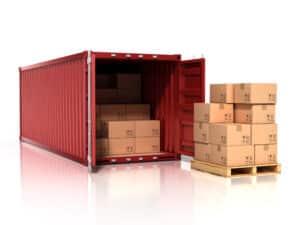Understanding The Classification of Freight

When shipping goods, not all items are created equal. Whether it’s a stack of steel beams or a delicate piece of antique furniture, how those items are classified directly affects the cost and care they receive during transit. Enter freight class—a system that holds the key to understanding the balance between weight, size, and handling requirements for your shipment. Here’s what freight class means and why understanding it can make your shipping process smoother and more cost-effective.
What Is Freight Class?
Freight class is a standardized system created by the National Motor Freight Traffic Association (NMFTA) in the U.S. It assigns a number, ranging from 50 to 500, to different types of goods based on specific characteristics. The primary goal of this system is to ensure accurate pricing and proper handling during transportation. By assigning a freight class, carriers can quickly assess how much space an item takes up in a truck, how much it weighs, and how difficult it may be to handle.
Freight classification generally considers four key factors:
- Density: The amount of space an item takes up in relation to its weight.
- Stowability: How easily it can be packed with other items.
- Handling: How easy or difficult the item is to load, secure, or unload.
- Liability: The likelihood of the item being damaged or causing damage to other shipments.
Each freight class affects the cost of shipping, with lower numbers typically indicating denser and easier-to-handle freight, which costs less to ship. Higher numbers represent more delicate or bulky items, which are more expensive to transport.
Examples of Freight Classifications
Freight class has a direct impact on shipping costs. By looking at common classifications, you can see how weight and stowability influence the final price.
Freight Class 50: The Most Affordable
Freight class 50 represents the least expensive goods to ship. These items are typically very dense and take up little space in a truck, meaning more can be packed together. They’re also less likely to be damaged during transit.
Example: Things like steel beams, bricks, or sheet metal often fall into class 50. These items are heavy, easy to stack, and have little risk of damage, making them ideal for low-cost shipping.
Freight Class 85: Mid-range, Versatile Items
Class 85 is a middle-ground option and covers bulkier items but still relatively easy to transport and handle. Many household and commercial goods fall into this category, as they strike a balance between weight and space.
Example: Machinery parts, car engines, and boxed furniture often fall into this class. These items are moderately dense and don’t require specialized handling, so they ship at a moderate cost.
Freight Class 125: Light but Larger Items
Class 125 represents lighter items that take up more space, making them more expensive to ship. This class often includes less dense goods and may require special packing to avoid damage during transit.
Example: Bicycles, assembled office chairs, or crated electronic equipment. These lighter items occupy more room, making them pricier to ship than denser goods.
Freight Class 175: Bulkier, Fragile Items
Class 175 is for bulkier goods and more susceptible to damage, meaning carriers have to take extra care when loading, securing, and delivering these items. The extra handling and space needed push these goods into a higher freight class.
Example: Glass products, delicate furniture, or large appliances fall into this category. These items may require extra padding, protective crates, or custom handling, increasing shipping costs.
Freight Class 250 and Up: Oversized or Delicate Items
Freight class 250 and above often applies to items that are large, delicate, or difficult to handle. These shipments may require special storage considerations or additional precautions to prevent damage. Shipping these items is expensive because they take up a lot of space and require careful attention.
Example: A grand piano or an industrial-sized refrigerator would fall into this class. These items are both oversized and sensitive to handling, so they cost significantly more to transport.
Freight Class 500: Highly Fragile or Bulky
Class 500 is the highest freight class, reserved for items that are either fragile, extremely bulky, or difficult to stow alongside other freight. These items are typically costly to ship due to the special attention they require and the amount of space they take up.
Example: Antiques, delicate artworks, or oversized sculptures often fall into this category. These items need exceptional care, custom packaging, and plenty of space, resulting in higher shipping costs.

Why Freight Class Matters
Freight classification is important for shippers and recipients, directly affecting the final shipping cost. If you’re shipping something that takes up a lot of space but isn’t particularly heavy, like a couch or large equipment, it will likely fall into a higher freight class, resulting in higher shipping costs. On the other hand, denser and more compact items will often cost less.
For businesses, classifying freight can help save money by avoiding reclassification charges. Misclassifying freight could lead to costly re-weighing fees or delays in delivery, so it’s important to get it right from the start.
By understanding the different classifications, both businesses and individuals can ensure they’re getting the best rate possible and that their items arrive safely. Whatever your shipment, knowing your freight class will make logistics easier for you. Contact us today to streamline your logistics and reduce your shipping costs.
